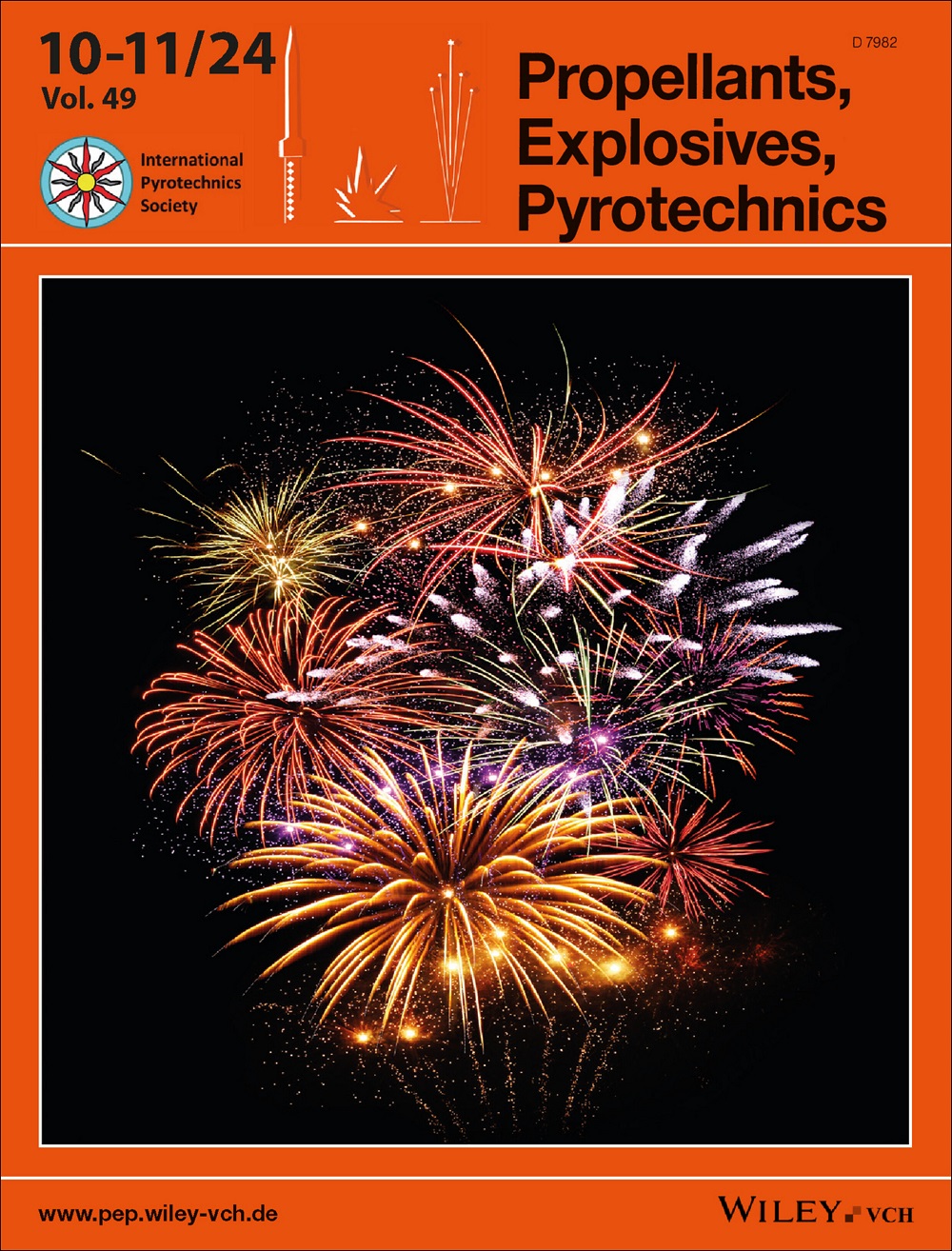储氢玻璃微球敏化乳化炸药热点形成的机理
IF 2
4区 工程技术
Q3 CHEMISTRY, APPLIED
引用次数: 0
摘要
为了研究影响储氢玻璃微球(GMB)敏化乳化炸药热点形成的主要因素,我们对储氢玻璃微球进行了冲击计算。计算的重点是跟踪两个主要机制:GMB 的脆性崩塌和内部气体的绝热压缩。计算中考虑了各种参数,包括加载压力、初始孔隙率、气体类型和初始气体压力。我们的研究结果表明,脆性塌缩对热点形成的影响可以忽略不计,而绝热压缩是 GMB 敏化乳化炸药热点点燃的主要内在机制。此外,我们还观察到低压氮气和高压氢气的点火时间相似。氢气的加入不会导致热点数量的增加,但会提高每个热点的能量,从而增强功率输出。GMB 尺寸的最佳选择对于热点形成和氢气储存至关重要。过大的 GMB 容易破壳,而过小的 GMB 储氢能力有限。20 μm 至 100 μm 尺寸范围内的 GMB 被认为更适合用于乳化炸药。本文章由计算机程序翻译,如有差异,请以英文原文为准。
Mechanism of hot‐spot formation of emulsion explosives sensitized by hydrogen‐storage glass microballoons
In order to investigate the primary factors influencing hot‐spot formation in emulsion explosives sensitized by hydrogen‐storage glass microballoons (GMBs), we conducted impact calculations on hydrogen‐storage GMBs. The calculations focused on tracking two main mechanisms: the brittle collapse of GMBs and the adiabatic compression of internal gas. Various parameters were considered, including loading pressures, initial porosities, gas types, and initial gas pressures. Our findings indicate that the contribution of brittle collapse to hot‐spot formation is negligible, while adiabatic compression emerges as the predominant intrinsic mechanism for hot‐spot ignition in GMB‐sensitized emulsion explosives. Moreover, we observed that the ignition time remains similar for low‐pressure nitrogen and high‐pressure hydrogen. The addition of hydrogen does not result in an increased number of hot‐spots; however, it elevates the energy of each individual hot‐spot, thereby enhancing power delivery. Optimal selection of GMB size is crucial for hot‐spot formation and hydrogen storage. GMBs that are excessively large are prone to shell breakage, while overly small GMBs have limited hydrogen storage capacity. GMBs within the size range of 20 μm to 100 μm are deemed more suitable for emulsion explosives.
求助全文
通过发布文献求助,成功后即可免费获取论文全文。
去求助
来源期刊

Propellants, Explosives, Pyrotechnics
工程技术-工程:化工
CiteScore
4.20
自引率
16.70%
发文量
235
审稿时长
2.7 months
期刊介绍:
Propellants, Explosives, Pyrotechnics (PEP) is an international, peer-reviewed journal containing Full Papers, Short Communications, critical Reviews, as well as details of forthcoming meetings and book reviews concerned with the research, development and production in relation to propellants, explosives, and pyrotechnics for all applications. Being the official journal of the International Pyrotechnics Society, PEP is a vital medium and the state-of-the-art forum for the exchange of science and technology in energetic materials. PEP is published 12 times a year.
PEP is devoted to advancing the science, technology and engineering elements in the storage and manipulation of chemical energy, specifically in propellants, explosives and pyrotechnics. Articles should provide scientific context, articulate impact, and be generally applicable to the energetic materials and wider scientific community. PEP is not a defense journal and does not feature the weaponization of materials and related systems or include information that would aid in the development or utilization of improvised explosive systems, e.g., synthesis routes to terrorist explosives.
 求助内容:
求助内容: 应助结果提醒方式:
应助结果提醒方式:


